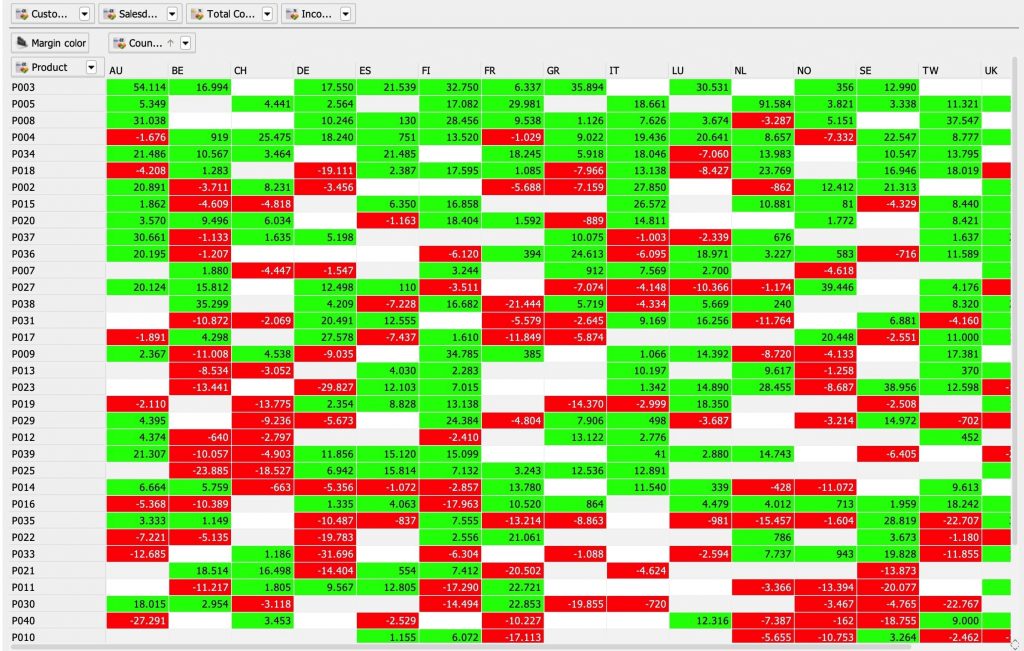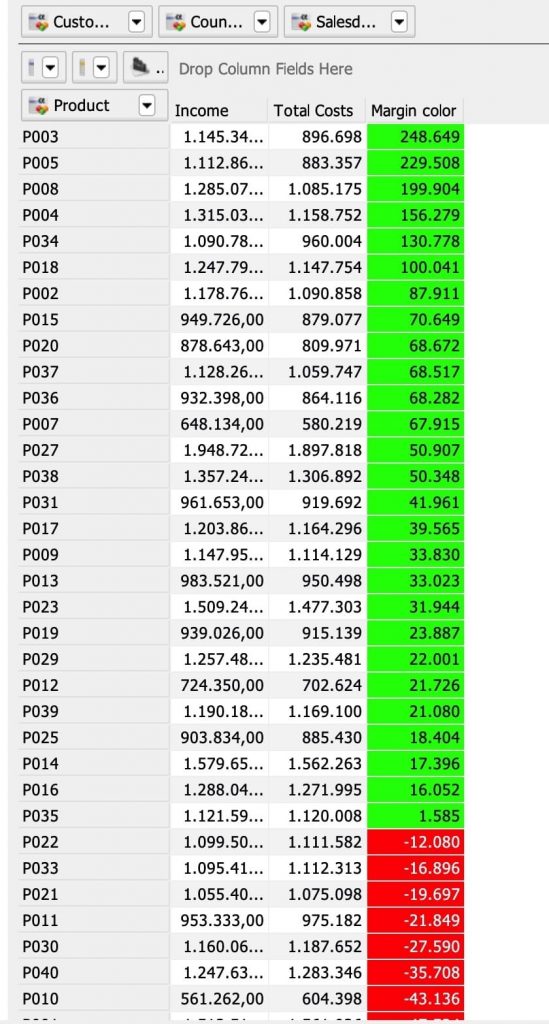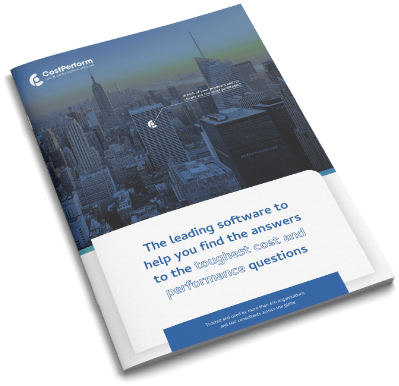Most costing methods are single dimensional. This means that you allocate your costs to one dimension, like products, countries, clients or sales channels. Multi-dimensional Costing however, allows you to allocate costs across multiple dimensions. The basic reasoning behind it? Multiple dimensions can cause and trigger costs. Think of a bike, model X, being bought by a young urban hipster in a branded store in the US. Now think about the same bike being bought online by a fit elderly woman in Australia. Both bikes are exactly the same product. But a lot of different costs were made to sell it.
How does Multi-dimensional costing work? A 2 step approach
The key thinking in Multi-dimensional costing is that you distinguish and allocate costs through multiple dimensions, which allows you to determine your costs more accurately.
Step 1
First, you allocate your cost to your different dimensions. In the example above, one can determine 4 dimensions. These are: product, customer type, channel and region.
The obvious one is product. Assuming you only have one factory and depending on your manufacturing processes and lay-out, it’s safe to assume that each model X bike costs the same to manufacture. Other models have different specs, thus require different materials and processes involved, which results in different costs.
Customer type might be another dimension. Many large companies have different marketing campaigns, different support teams, etc based upon different client types (every bank distinguishes between corporate and private clients for example). It therefore isn’t fair that the costs of a support team for elderly clients is included in the cost price of a bike that is sold to the young urban hipster. So in the dimension customer type these two groups can be separated.
Sales channels are normally highly separated within companies. Teams responsible for online webshops are different from the teams that determine what a store on main street should look like. It is therefore fair to also separate the channel costs.
Regional costs can highly differ. Having a sales team on the ground in Australia might incur completely different costs than a sales team in the US. Similarly, you’ll probably have country-specific costs that can be allocated to those countries.
Step 2
Allocating costs to your sales transactions. After you’ve allocated your cost to the different dimensions, it’s time to bring those costs together using your sales transactions. Every sales transaction within your company (yes, those could be millions…) contains information on the dimensions mentioned above. Back to the bike example. The first sale tells us the following info:
- Product dimension: bike model X
- Client type dimension: young urban hipsters,
- Sales channel: physical store,
- Region dimension: US.
The second sale tells us this:
- Product dimension: bike model X
- Client type dimension: elderly people,,
- Sales channel: online,
- Region dimension: AustraliaUS.
You’ll usually deal with the additional information of volume (in this case 1) and selling price.
The information from your sales transactions allows you to start allocating our costs. Only sales transactions where the channel is online will get the cost for the online store management. Only sales transactions for young urban hipsters will get the marketing campaign cost for young urban hipsters. Only sales transactions that took place in the US get the US specific costs, etc, etc.,
This two-step process results in more precise insight in costs and profitability which in turn helps you make decisions to better your business.


When to use Multi-dimensional costing?
There are a lot of types of businesses, business models or situations where Multi-dimensional Costing can be of great help. We’ve listed a few of them below:
- When you sell products in a store as well as online
To make a clear overview of the costs you’ll need to distinguish between sales online and in- store. Costs for online promotion should be allocated to the online sales and costs to maintain the store building should be allocated to sales made there.
- If there are marketing campaigns in specific countries or areas
The costs spent on the marketing campaign should be allocated to the sales directly linked to said campaign. This allows you to compare the performance of several marketing campaigns.
- If you sell to a wholesale channel
There are less shipping, packaging and transaction costs when selling to a wholesale channel. With Multi-dimensional Costing, this difference is reflected in the allocation of the costs.
- If you distinguish between different client groups
Allocating costs to specific client groups, gives you a more clear picture of the groups that are more (or less) profitable than others.
What are the benefits of Multi-dimensional costing?
CostPerform offers a Multi-dimensional costing template. When using it to allocate your costs across multiple dimensions, you get: more accurately allocated costs and better insights in the profitability of your products and services.
The main benefits of using CostPerforms Multi-dimensional Costing software are:
- exclusive insights into cost and performance flows;
- advanced and precise costing methods;
- better insights into true costs and profitability;
- significantly more precise cost allocations.
